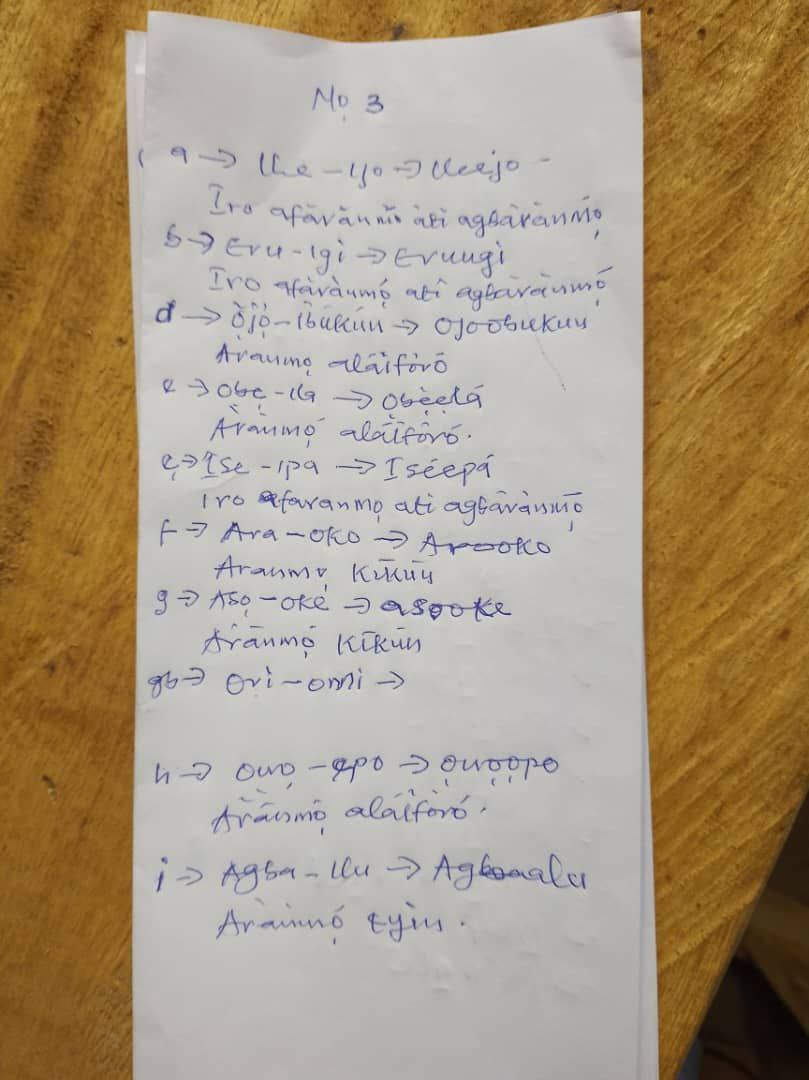FOR WAEC 2024 SUBJECTS LINK
WELCOME TO ONGOING WAEC 2024 TODAY’S SUBJECTS ANSWERS .
HAUSA OBJ
HAUSA OBJ
1DCADCCCCAB
11ABDBBBBBAA
21CDDCBCBBCA
31DBACBCCDDC
41ABACCDCDAD
51BCCACACCAB
Completed by MR ABILITY
HAUSA THEORY
(4)
(a) Suna Gama-gari: Shi ne sunan da idan aka ambata shi yake nuni zuwa ga abubuwa da yawa masu jinsi ko nau’i ɗaya. Wato suna ne na tarayya. Dukkan abin da ke da irin wannan jinsi ko nau’i, an yi tarayya da shi a cikin wannan sunan. Misali, mutum, yaro.
(b) Tattarau: Suna ne da ya dunƙule abu fiye da ɗaya a cikinsa. Wato suna ne da ya tattaro abubuwa masu yawa a cikinsa. Misali, garke, ƙungiya.
(c) Wakilin Suna Ɓoyayye: Shi ne wakilin sunan da baya fito da wanda ake magana a kansa fili. Wato idan aka ambata shi, kowa ma yana iya shiga ciki. Misali, wance, su wane.



More coming…….
IGBO OBJ
Igbo Obj-
1-10 BACCCBBDAA
11-20 DBDDDAADAB
21-30 BABBCBABAD
31-40 DABCDDABBD
41-50 BCCDDADDBB
51-60 CCBCACBDC
Completed by MR ABILITY
IGBO ANSWERS
(3a)
(i) Akara ụdaelu (/)
(ii) Akara ụdaala (\)
(iii) Akara ụdansụda (-)
(3b)
(i) érō
(ii) éwí
(iii) ńgàlàbà
(iv) ékwúmékwú
(v) ụgwọ ọrū
(vi) ụlò ńrī
(vii) mmèmmé
(ix) pàtá
(x) ḿmádù
(xi) ìgwè
(xii) ọtụtụ








More Igbo loading…….
YORUBA-OBJ
1-10 BACCCBBDAA
11-20 DBDDDAADAB
21-30 BABBCBABAD
31-40 DABCDDABBD
41-50 BCCDDADDBB
51-60 CCBCACBDC
THEORIES






WAEC ENGLISH IS A GENERAL SUBJECT THAT IS WHY WE ARE SO SERIOUS WITH IT BECAUSE ANY FAILURE ON ENGLISH THAT MEANS U WILL WRITE WAEC AGAIN.. TO AVOID FAILURE CLICK HERE TO ENJOY UR ENGLISH RIGHT NOW CLICK TO ENTER ENGLISH ROOM
PLS INVITE ALL UR FRNDS WRITING JAMB 2025 TO MR ABILITY TO ENJOY THEIR JAMB AND GET ADMISSION LIKE OTHERS!!
==INVITE OTHERS NOW!!!==========
